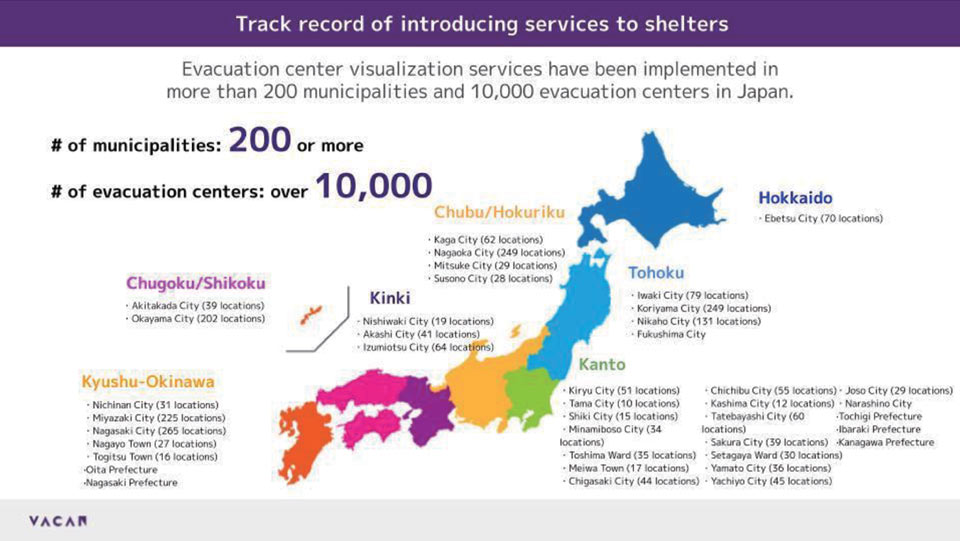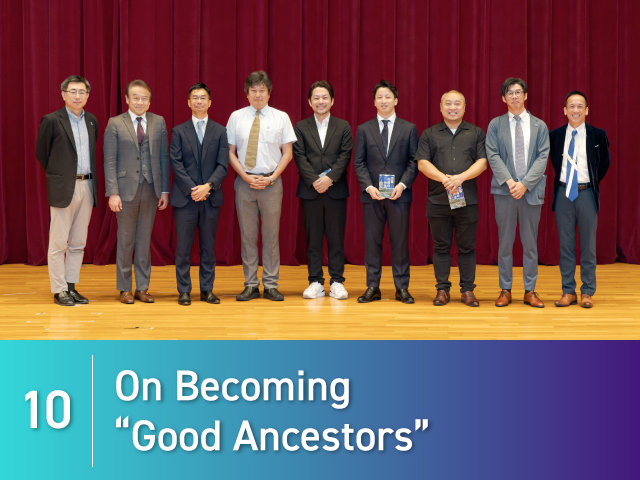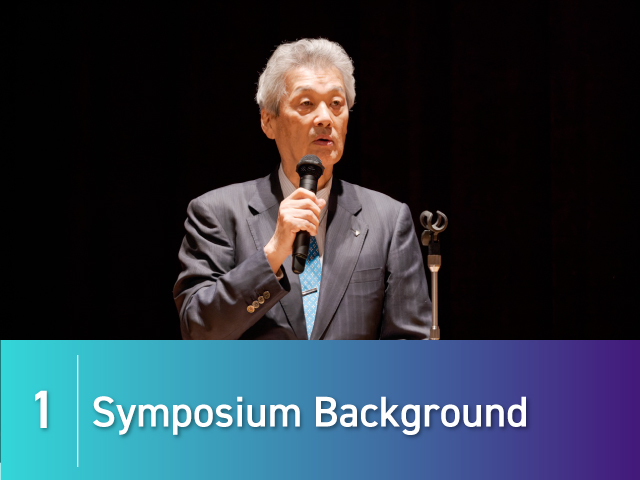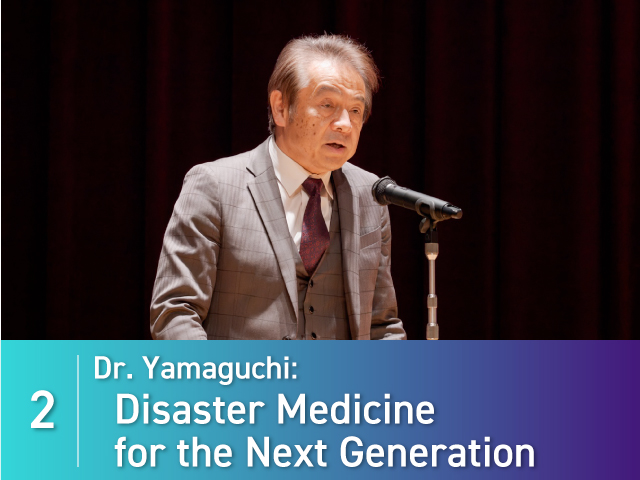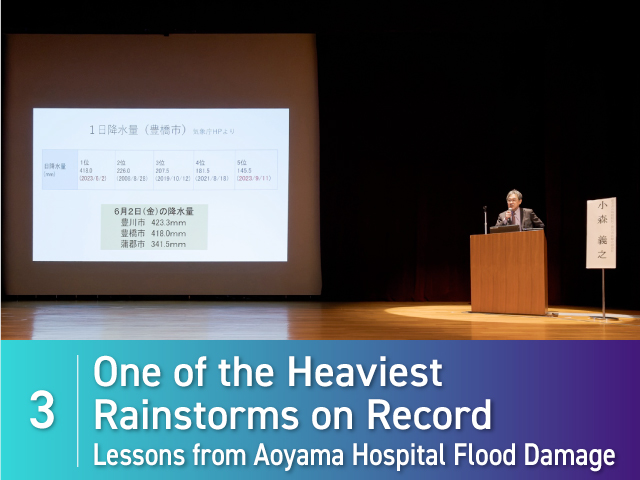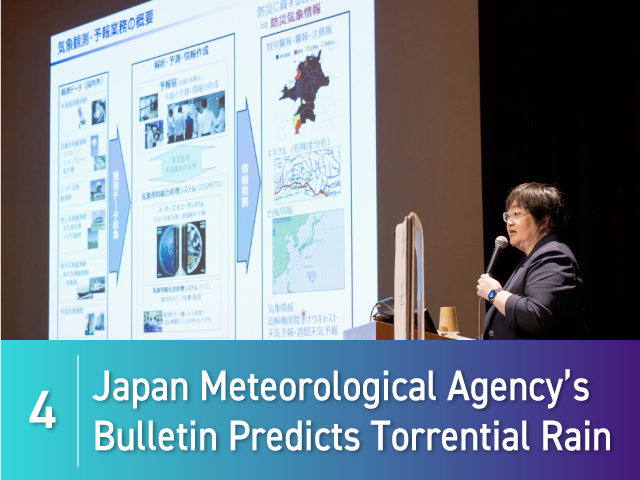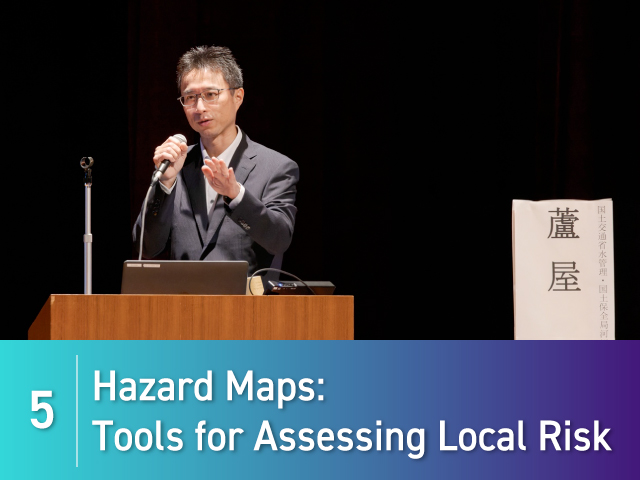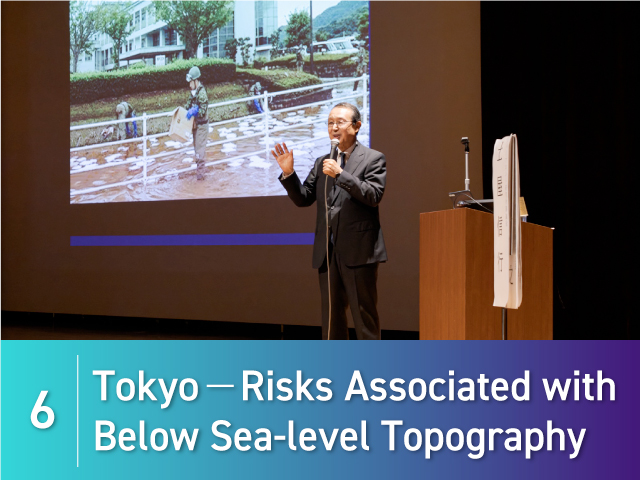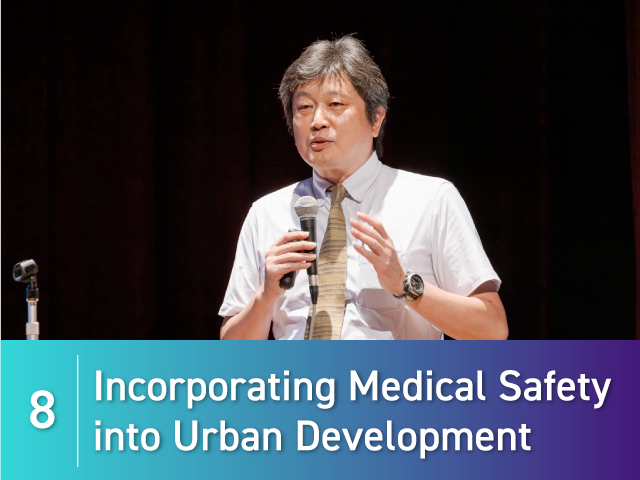9. A Lifesaving Society Enabled by Cross-industry Collaboration
Finally, Yoshiki Hiruma of the Development Bank of Japan Inc. explored possibilities for “Structuring and Designing a Lifesaving Society,” with collaboration in disaster medicine across the technology, industry, infrastructure, and service-sector industries. Mr. Hiruma has studied urban disaster mitigation/management as well as social innovation and has served on internal and external advisory committees on disaster prevention, BCPs, crisis management, climate adaptation/resilience countermeasures, and financial technology. In 2015, he was named a Young Global Leader by the World Economic Forum.
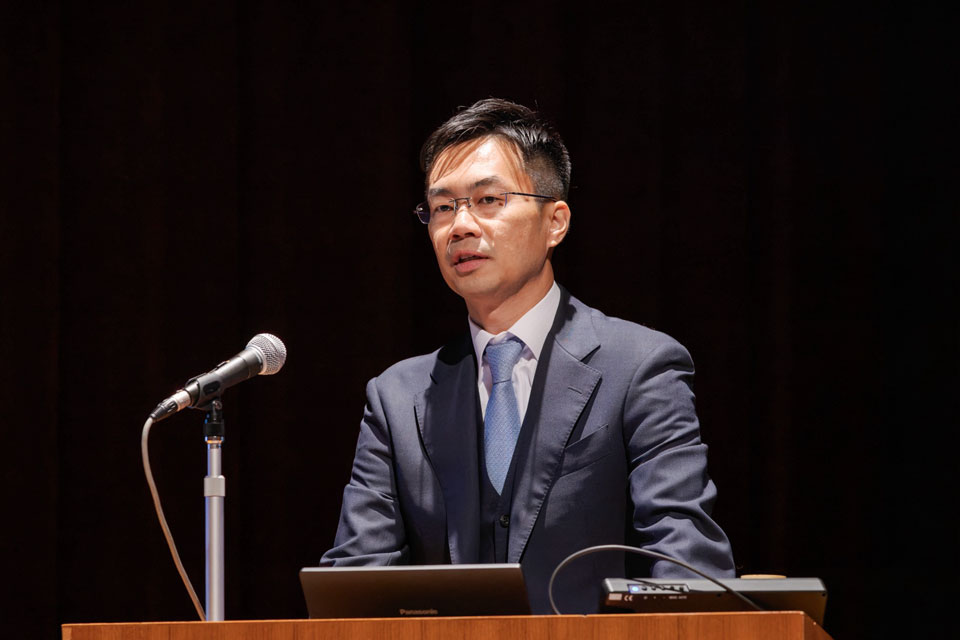
Mr. Hiruma suggested that Japan gains advantages from being a major disaster-prone nation: “We have overcome multiple national crises and disasters. As the characters composing the Japanese word crisis (危機) suggest, skillfully managing ‘danger’ (危) has allowed creation of ‘opportunity’ (機). We flipped a mental switch and began preparing hardware for both ordinary times and disaster situations, anticipating risks, creating predictive information, and speedily dispatching warnings. We formulated new systems. Japan has created frameworks for a variety of disasters. All these efforts are the wisdom accumulated by our ancestors.”
Mr. Hiruma emphasized that “preventable deaths during both normal and emergency situations are not merely issues for the medical community but for the entire society. We can solve this by improving relationship vulnerabilities among individuals, families, communities, and societies that are often isolated, an essential factor in creating lifesaving societies. The key is not to pursue optimization within segmented fields, but rather to have medical and other specialists establish increasingly tight collaborations.”
Some of the venture companies participating in the symposium introduced innovative technologies and services with potential roles in disaster medicine, as noted here.
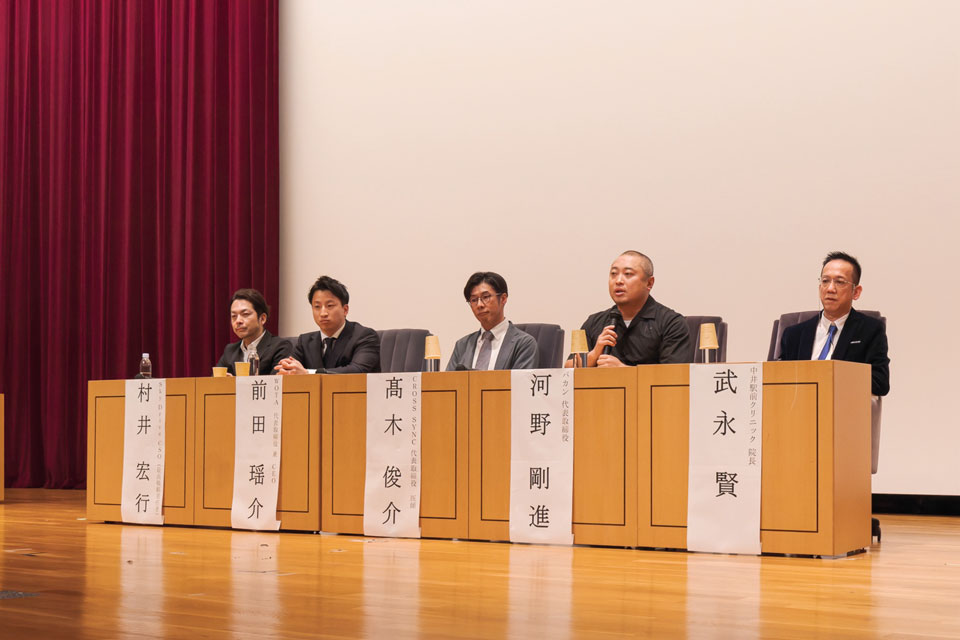
SkyDrive Inc.: Cargo Drones and eVTOL
SkyDrive is developing cargo drones and eVTOL. In response to a request by Japan’s Ground Self-Defense Force, the company engaged in disaster relief work following the January 2024 Noto Peninsula Earthquake, sending its cargo drones as survey flights to assess damage in isolated communities as well as to transport the emergency relief supplies.
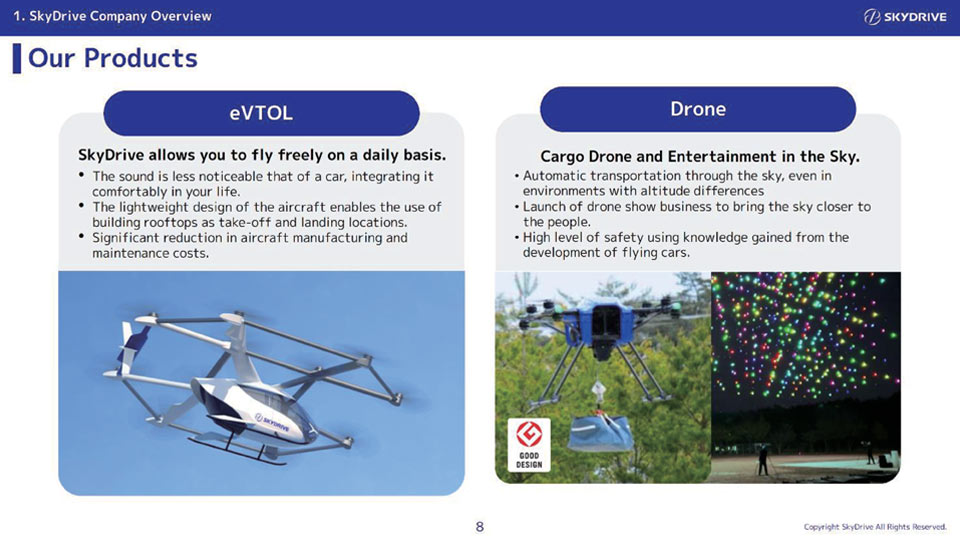
WOTA CORP.: Small-scale Decentralized Water Reuse Systems
WOTA is a start-up originating from the University of Tokyo, and it is working to tackle structural solutions to water problems. The disaster response efforts were initiated to help deal with the heavy rainfall in western Japan in 2018. WOTA introduced a prototype water circulation system to areas where many disaster victims had been unable to bathe for two weeks during the midsummer heat.
The small-scale decentralized water reuse system recycles and circulates over 98% of household wastewater, making it available for use. The company has a proven track record of providing showers and handwashing facilities during disasters on multiple occasions.
During the Noto Peninsula earthquake that occurred on New Year's Day this year, the company deployed approximately 100 units of portable water reuse system 'WOTA BOX' and about 200 units of water reuse hand-wash stand 'WOSH' to 84% of the evacuation centers which had experienced the long-term water outage and 68 hospitals and care facilities, providing support for bathing and handwashing.
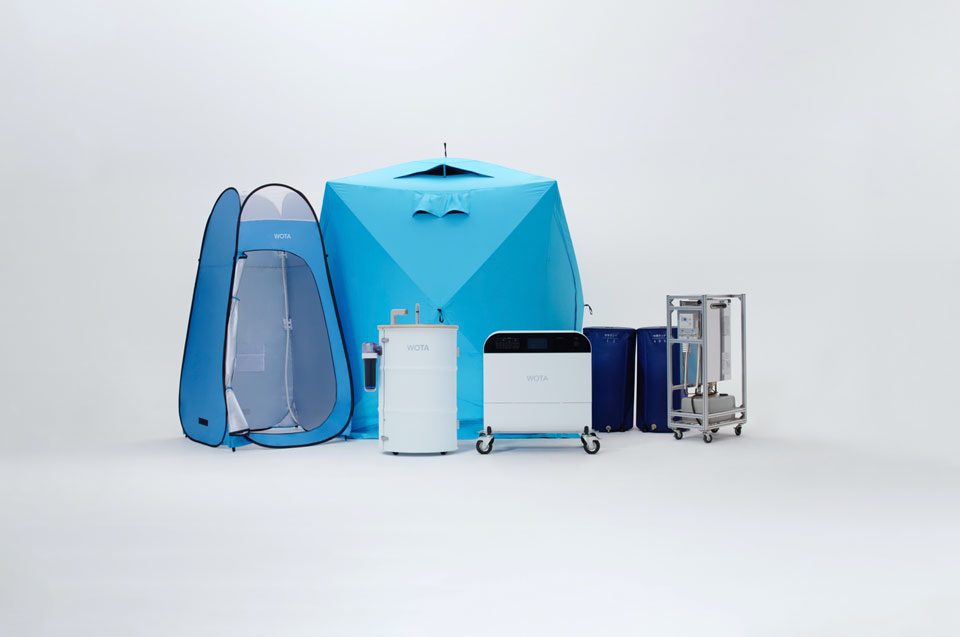
CROSS SYNC. INC: Telemedicine
CROSS SYNC is a certified venture launched by Yokohama City University. Using iBSEN DX, its biometric monitoring app, the company is building a system to enable early detection of abnormal symptoms in the medical setting, identifying individuals with potential risk among multiple patients seeking assistance.
Some 61% of medical errors in the ICU stem from failed patient observation or communication breakdown. The app enables medical professionals to evaluate patients remotely, with potential for usage in disaster-area medical care.
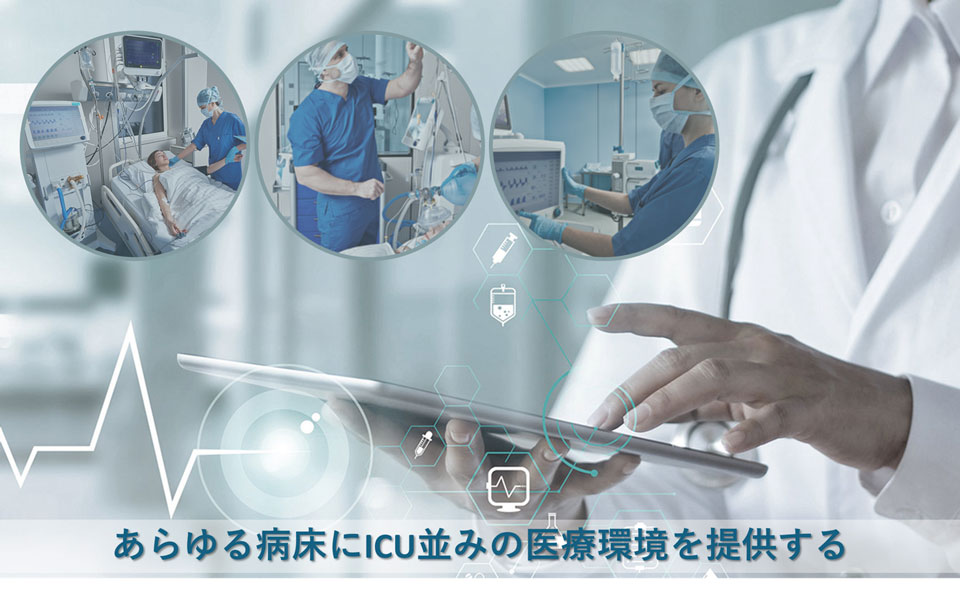
Vacan, inc.: Visualizing Facility Availability Information
VACAN is developing an IT platform enabling visualization of facility availability. The app would normally provide users with the availability of restaurant seating, restrooms, and other facilities in public and private institutions, such as schools and shopping malls. During disasters, however, such information would help users find vacancies at evacuation sites more easily.
